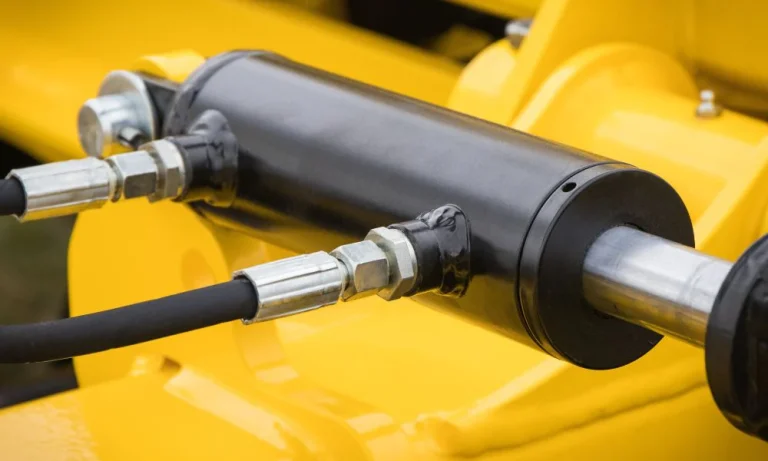
Specifically designed actuators are used for lifting vertical loads. These units are built to handle gravity effects and ensure safety while keeping the load steady in position. They include systems that stop the load from falling, allow smooth and accurate movement, and offer backup safety features for reliable operation. Selection criteria focus on load capacity, stroke length, mounting configuration, and control requirements. Hydraulic rams optimised for lifting include telescopic designs maximising stroke in compact packages, double-acting configurations enabling powered descent, load-holding valve integration preventing drift, and heavy-duty construction withstanding constant gravitational stress that vertical applications impose.
Telescopic cylinder advantages
Multi-stage telescoping designs achieve extended stroke lengths from remarkably compact retracted dimensions, making them ideal for vehicle lifts, dump trucks, and material handling equipment where space constraints prohibit single-stage cylinders of equivalent reach. Three-stage or four-stage extend to lengths three or four times their closed heights. Dump body applications use telescoping cylinders raising truck beds through forty-five-degree angles from thirty-inch retracted heights. The nested tube construction allows impressive reach without requiring excessively long equipment mounting.
Lifting capacity decreases as telescoping stages extend beyond the first section because later stages have progressively smaller bore diameters, generating less force at given pressures. Engineers must calculate maximum load capacity at full extension, ensuring adequate strength throughout the entire stroke range. Synchronisation mechanisms keep stages extending sequentially rather than erratically, guaranteeing smooth, predictable motion. The telescoping versatility makes these designs dominant in mobile equipment and compact machinery, where packaging efficiency matters enormously.
Safety valve integration
Lifting cylinders use integrated load-holding valves to stop the load from suddenly moving down if a hydraulic line breaks or if the system loses pressure. Counterbalance valves placed in the cylinder ports keep a steady pressure on the rod side. This control prevents the cylinder from collapsing under the weight of the load. Pilot-operated check valves hold the cylinder in position when the directional control valves are at rest. They trap the hydraulic fluid inside both chambers. This action forms a firm lock that blocks any movement of the cylinder.
- Counterbalance valves provide controlled descent speed under load weight
- Pilot-operated checks create hydraulic locks holding position indefinitely
- Velocity fuses detect ruptures closing within milliseconds, preventing drops
- Dual valve combinations provide redundant protection against single failures
- Adjustable settings accommodate various load weights and descent rate requirements
The safety valve integration transforms lifting cylinders into inherently safe systems where failures default to holding rather than dropping suspended loads. Forklift masts, aerial work platforms, and automotive lifts all mandate integrated safety valves meeting regulatory safety standards. The redundant protection systems provide critical safety margins for applications where falling loads threaten personnel or property. Best hydraulic cylinders for lifting applications feature telescopic designs achieving long strokes compactly, safety valve integration preventing load drops, heavy-duty construction withstanding gravitational stress, double-acting power control enabling descent management, and mounting configuration options accommodating installation constraints. These specialised design elements distinguish lifting cylinders from general-purpose designs. Proper cylinder selection, matching load capacity, stroke requirements, safety specifications, and mounting needs, ensures reliable, safe lifting performance across diverse applications from mobile equipment to industrial material handling systems.